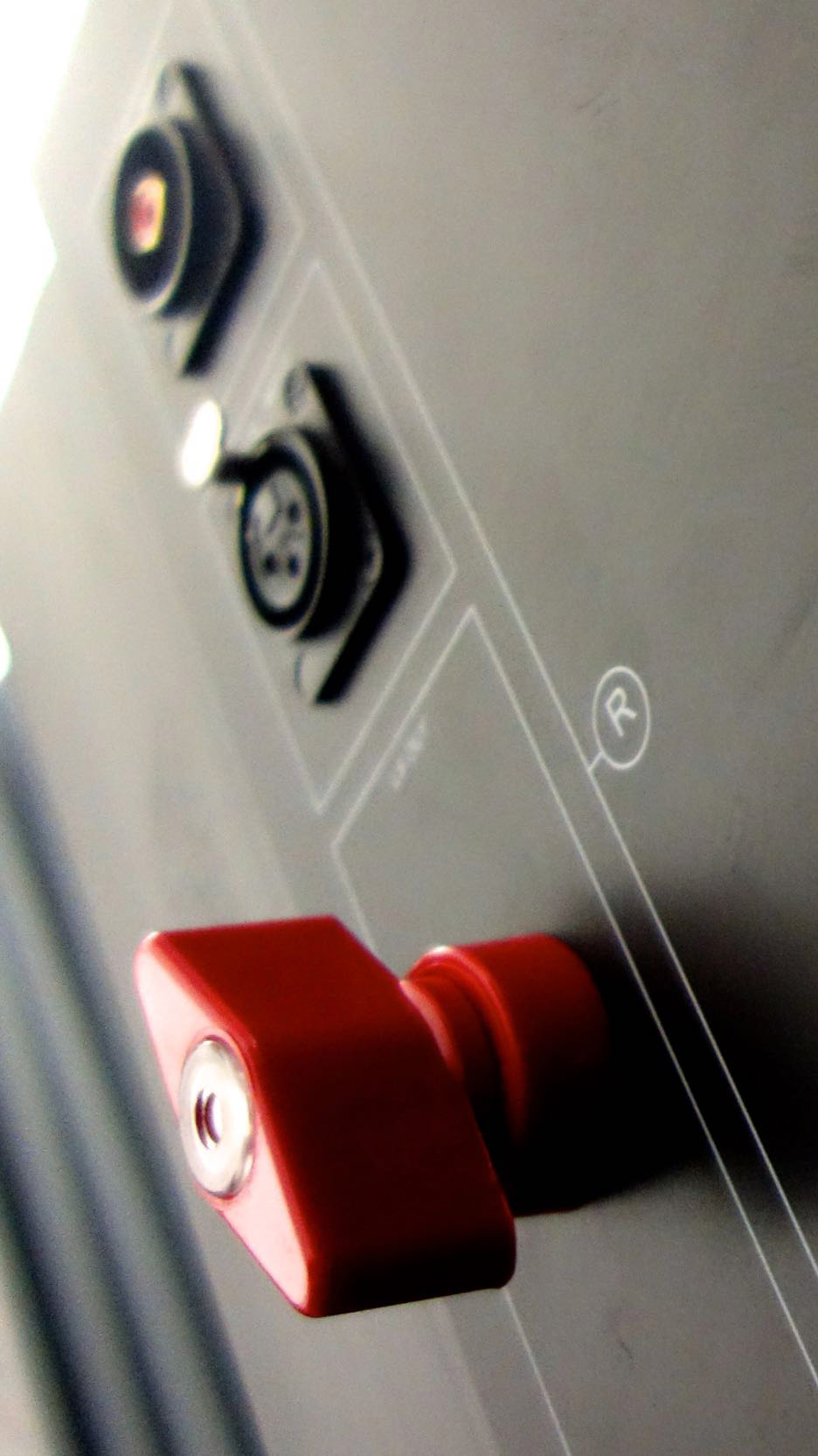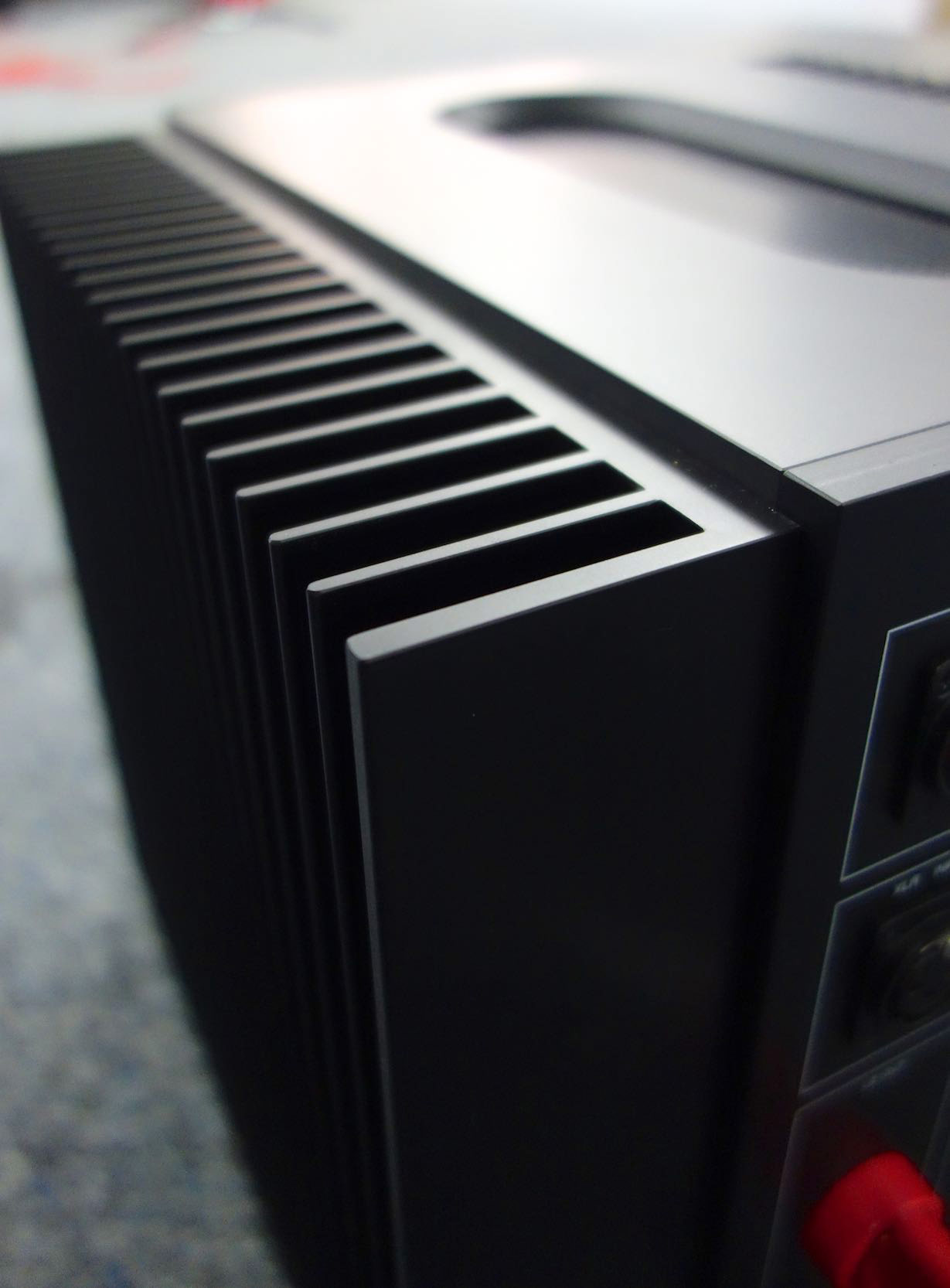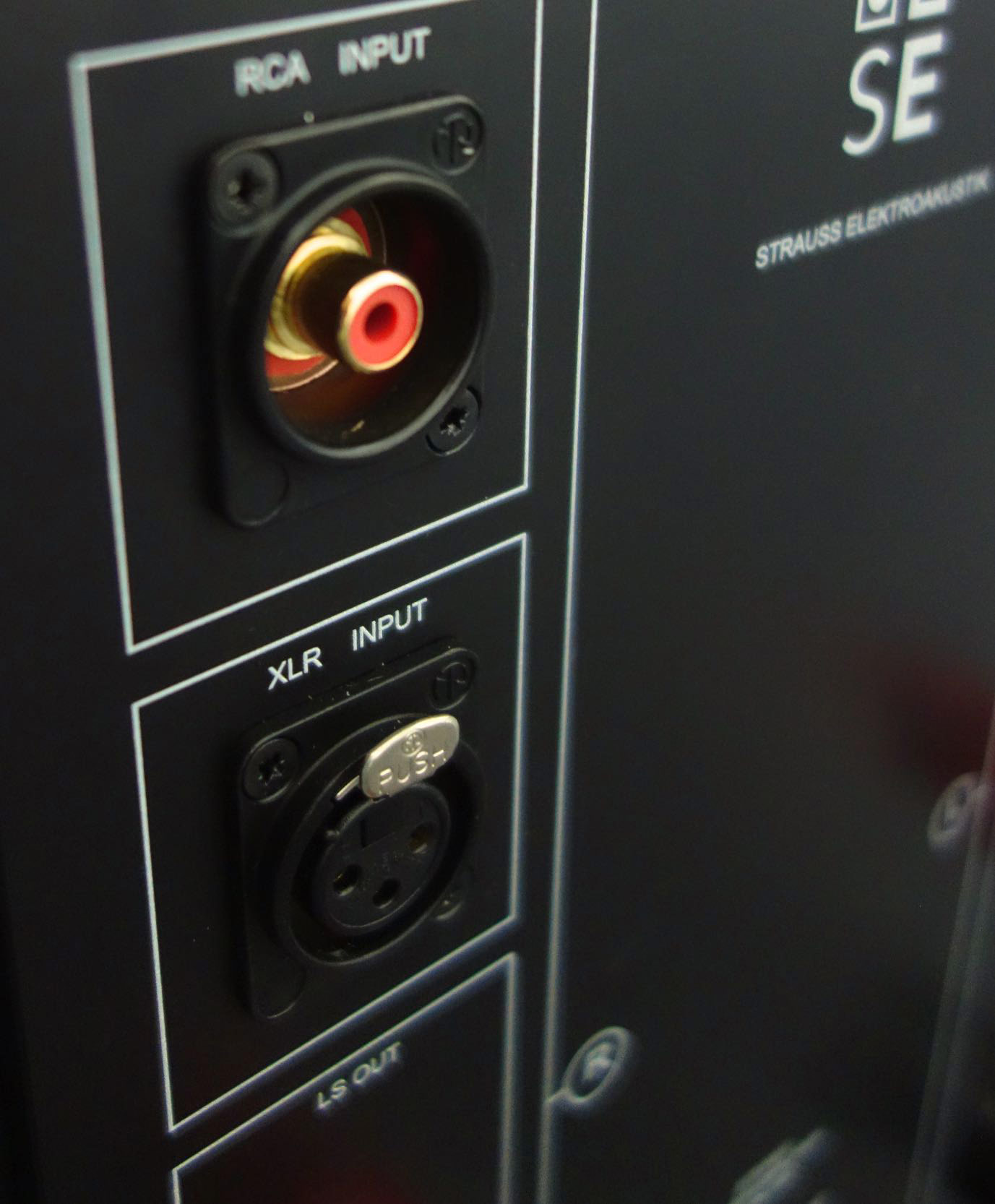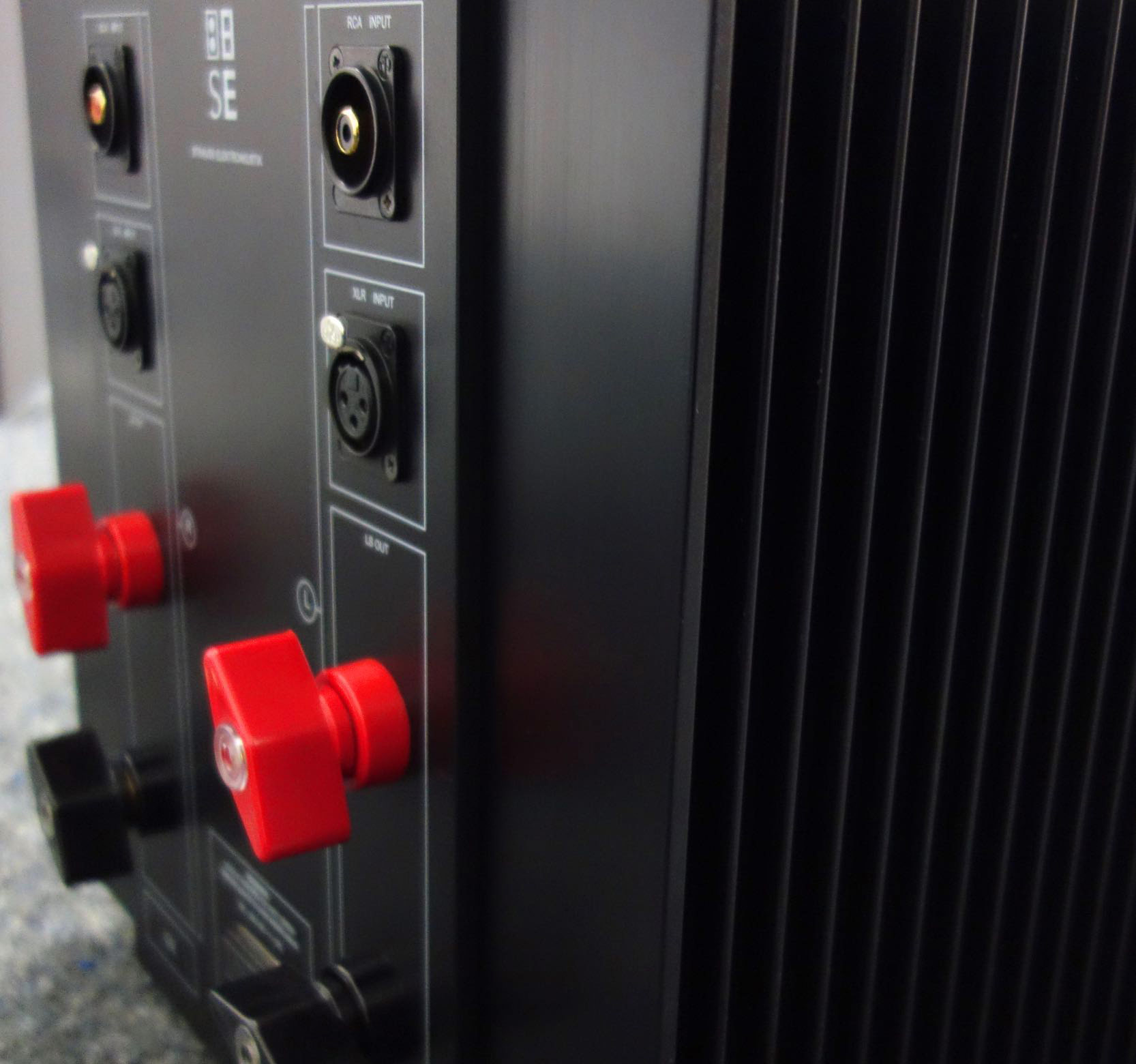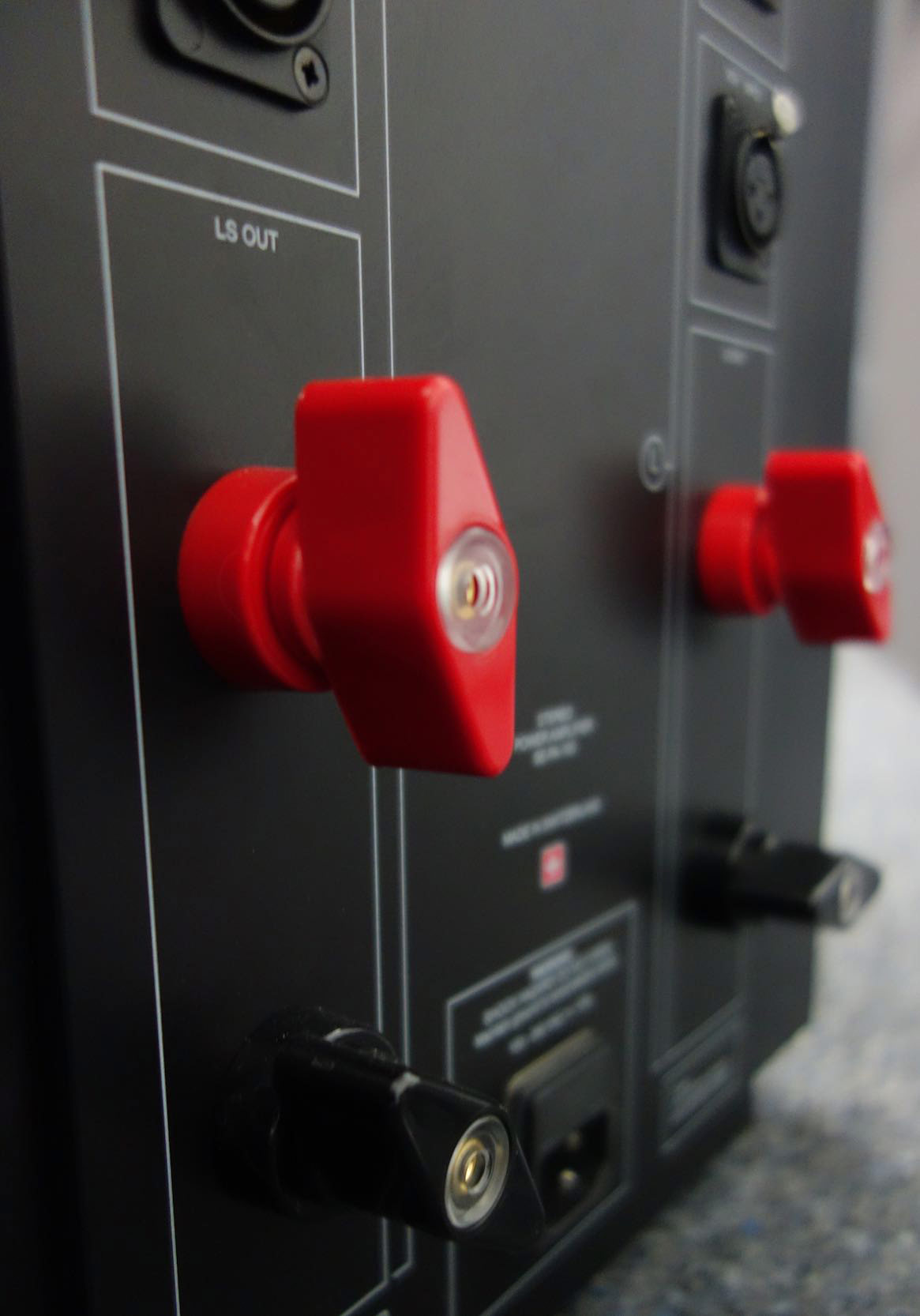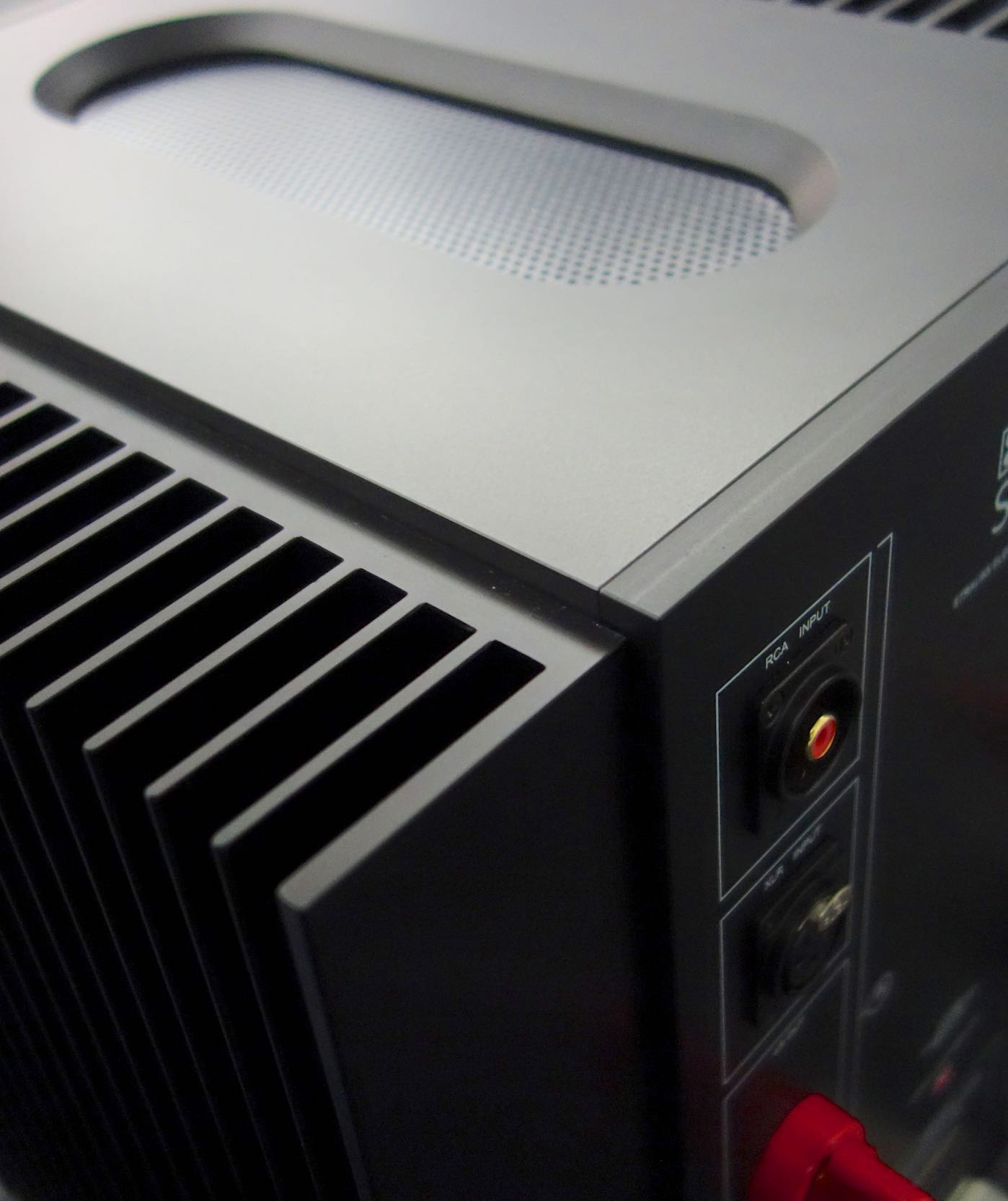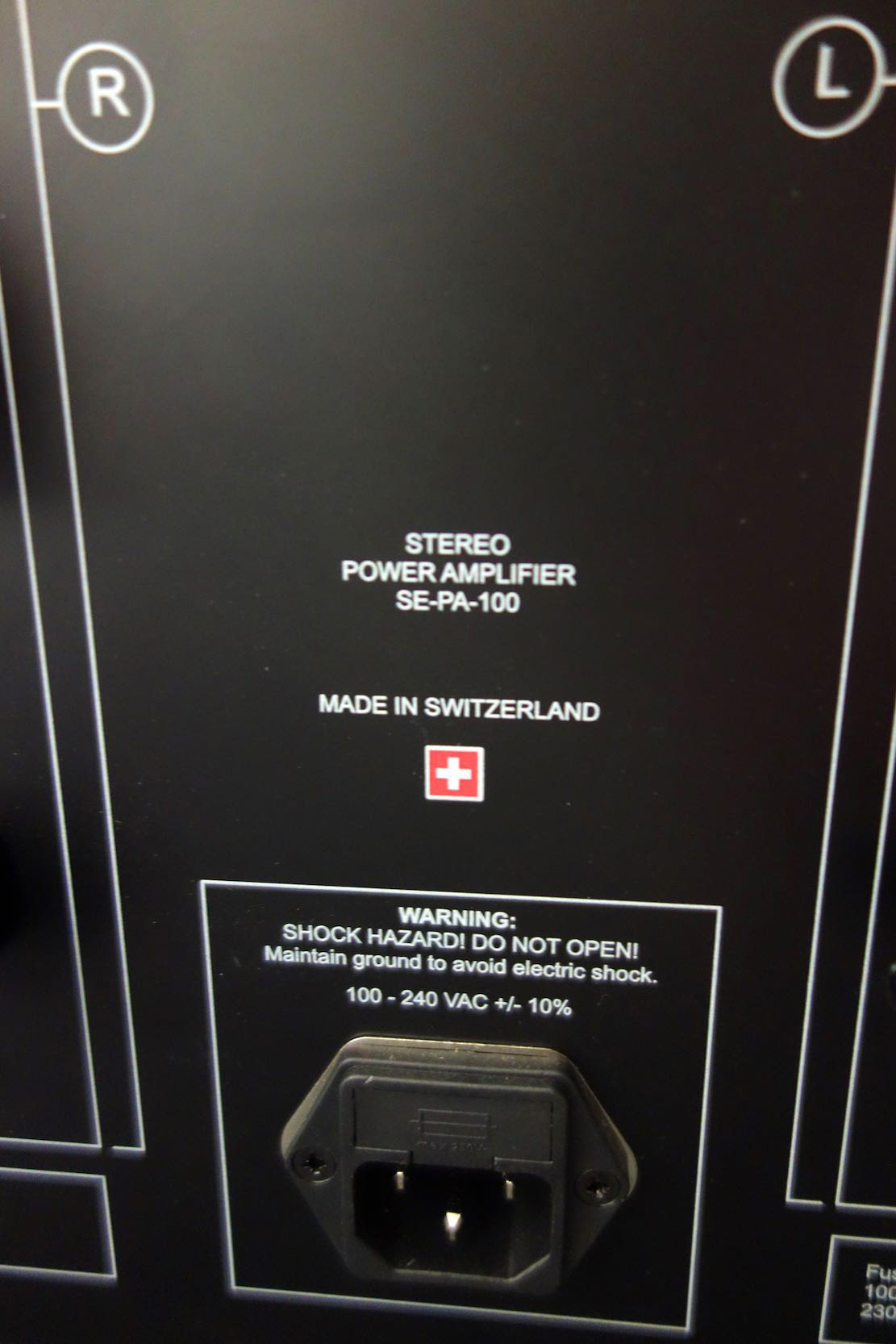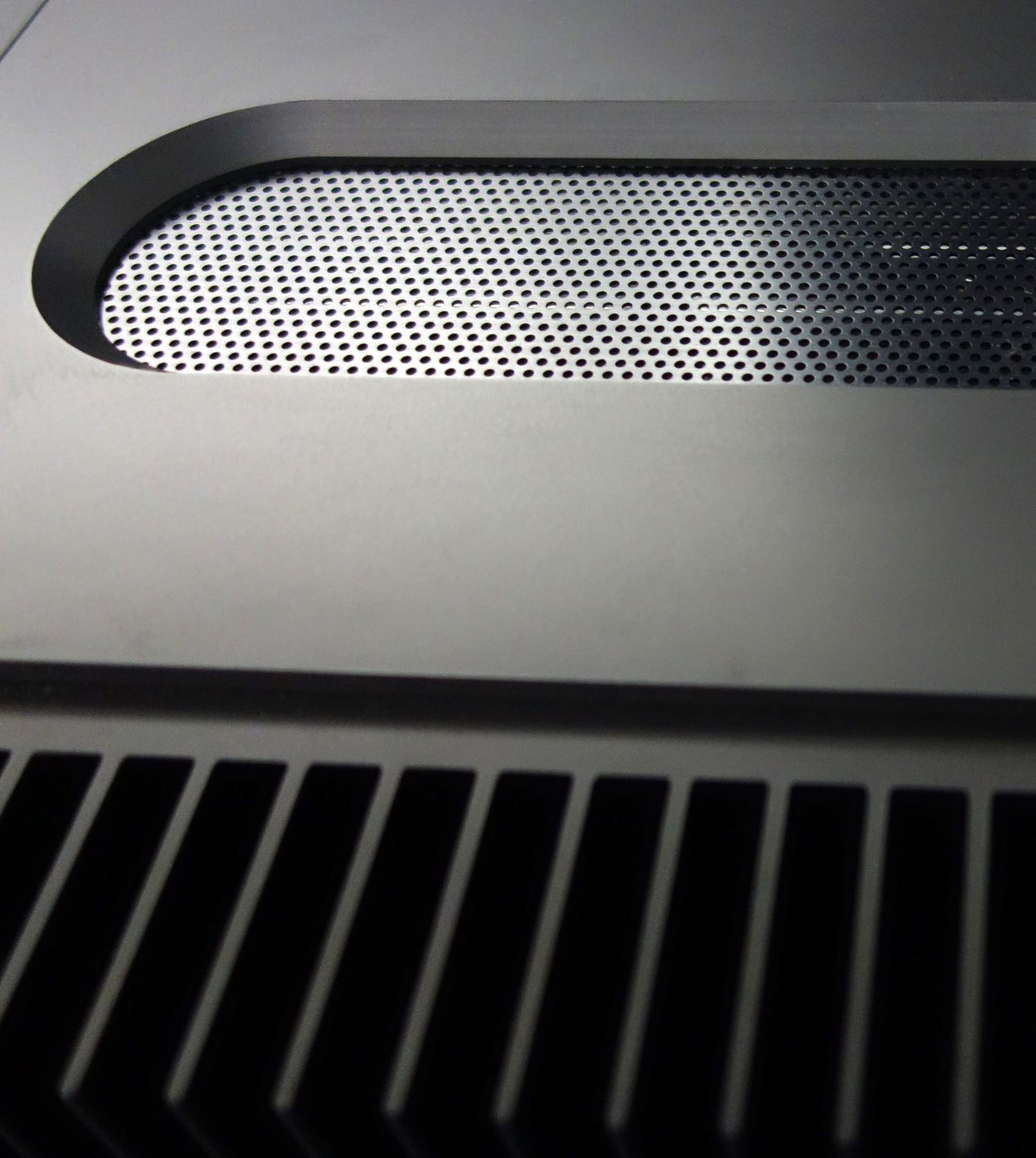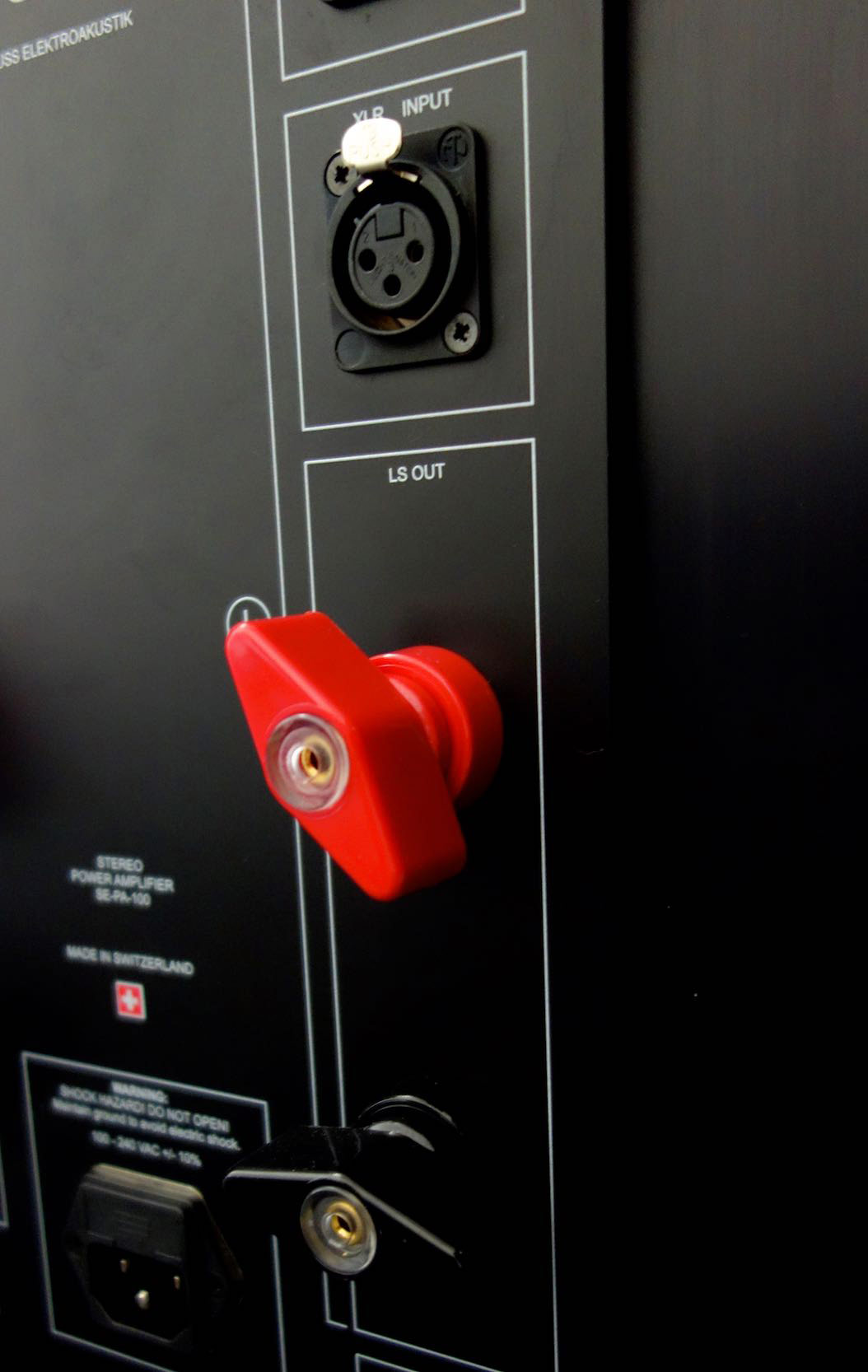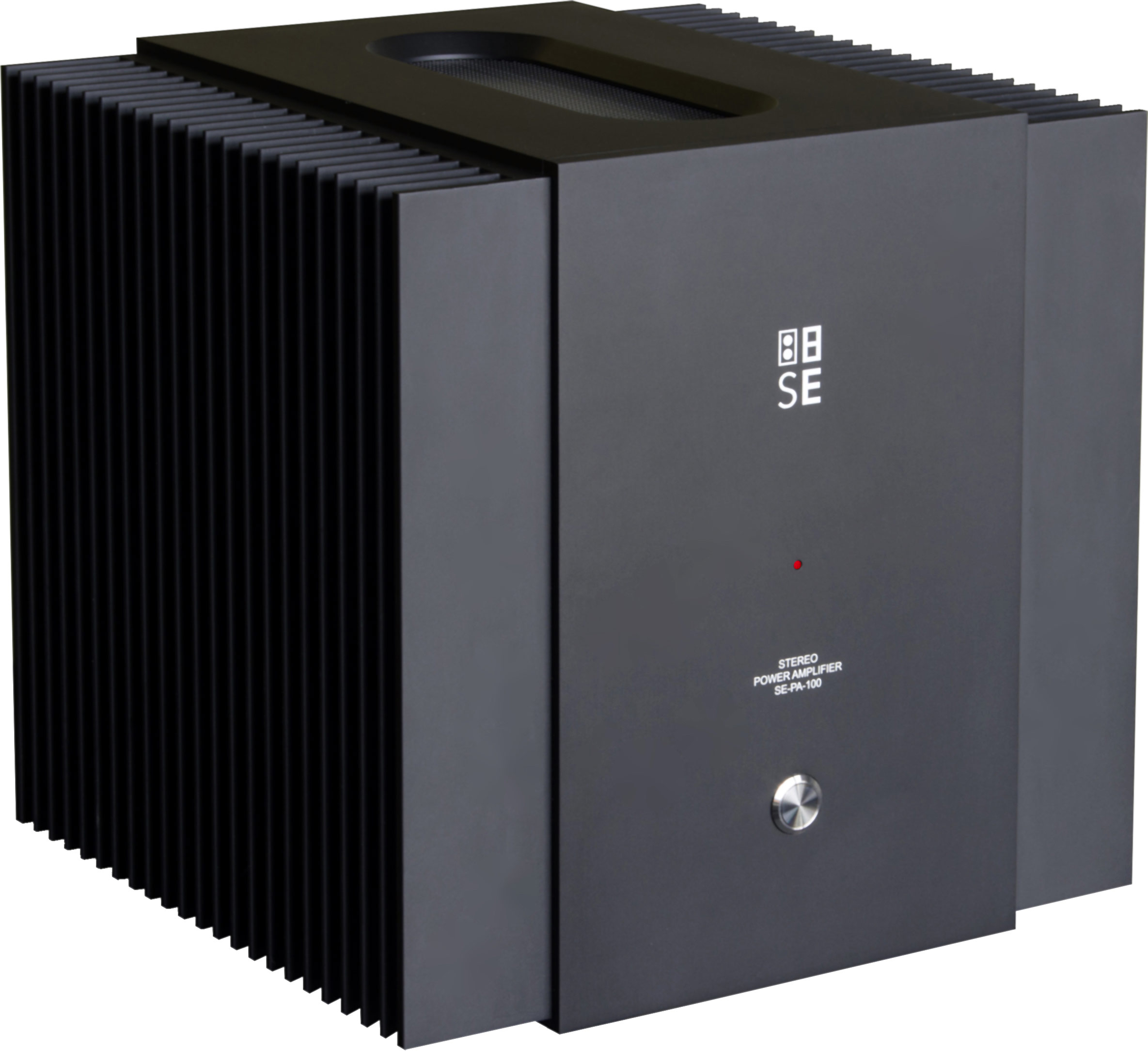
SE-PA-100
STEREO POWER AMPLIFIER SE-PA-100
HGBT HIGH GAIN BANDWIDTH TECHNOLOGY
The objective of linear power amplification is well recognized by professional audio amplifiers: the shape of the electrical voltage at the input should appear proportionately larger at the output – any deviation is distortion.
If a loudspeaker (dynamic transducer) is connected to a power amplifier carrying the audio signal, an exchange of electric currents begins, because the loudspeaker as a linear motor develops an electromotive force which makes it appear as a generator or voltage source. These voltages generated periodically by the loudspeaker and the corresponding currents flowing back into the amplifier are, by design, deformed to a greater or lesser extent by linear and nonlinear distortions.
In order to achieve the above-mentioned goal of linear power amplification, the regulation of the power amplifier must be able to suppress the loudspeaker electrical audio signals and their linear and non-linear distortions.
Based on measurements with linear and non-linear loads and based on listening tests of different power amplifiers, the output resistance has proved to be a critical parameter: it should be as low as possible over the entire frequency response.
With regard to the quality of the bass reproduction, this is no new insight. What is new, however, is the importance of this parameter for the clearly audible distortion in the mid-high range and in the wide range of sonic micro- and macrodynamics, contour, plasticity and spatial impression in the whole spectrum.
In particular for high frequencies and for large signals, the requirement of the lowest possible output resistance of the audio amplifier enforces the most efficient control, the technical feature of which is a high GBP gain bandwidth product.
The HGBT high-gain bandwidth technology of the SE-PA-100 is a particularly powerful control technology for very low output resistance, very low distortion and very low noise. In fact, the power bandwidth of the SE-PA-100 is 1.7 MHz, limited only by an input filter to 5 Hz – 130 KHz (-3 dB).
– Analog HGBT audio amplifier with high gain and bandwidth: High Gain Bandwidth Technology
– Output stage with bipolar high-performance transistors – Very low output resistance
– Very high power bandwidth
– Very low noise
– Very low distortion and intermodulation
– Soft clipping
– Power buffer for all stages of voltage and current amplifications
– Regulated power supply for international AC mains voltage connection
– Aluminum housing with 10 mm wall thickness as a fully grounded block
– Convection cooling; no fans
– Loudspeaker connections with low transition resistances
Rated power operated
90 Watt RMS into 8 Ohms; both channels
Load impedance
8 – 16 Ohms (do not use 2 – 4 ohm loads)
SOA
Current limiting and temperature protection
Frequency response
5 Hz – 130 KHz (- 3 dB); ref. 1 KHz, 0 dB
Signal-to-noise ratio
– 96 dB / 1W into 8 Ohms; 20 Hz – 30 KHz
– 100 dB / 1 W into 8 Ohms; A-weighted
– 119 dB / 90 W into 8 Ohms; A-weighted
THD + noise Intermodulation distortion
0.006 % / 1 W into 8 Ohms; 20 Hz – 30 KHz
0.0007 % / 1- 50 W, 8 Ohms; CCIF/DFD 19+20 KHz
Output impedance
0.003 Ohms to 0.006 Ohms
20 Hz – 20 KHz, 1 W into 8 Ohms
Damping factor
2800 — 100 Hz / 1 Watt into 8 Ohms
2800 — 1 KHz / 1 Watt into 8 Ohms
1400 — 10 KHz / 1 Watt into 8 Ohms
1400 — 20 KHz / 1 Watt into 8 Ohms
Input resistance
3 KOhms balanced XLR
1.5 KOhms asymmetrical RCA
Input sensitivity
0.93 volts for rated power
XLR: differential voltage 0.93 V
RCA: input voltage 0.93V
Voltage gain
29.6 dB
AC mains voltage Power consumption
100 – 240 VAC; + / – 10 %; 50 – 60 Hz
Min. 100 W (standby); Max. 400 W
Fuse
100 – 110 VAC 8A slow
230 – 240 VAC 4A slow
Dimensions & Weight
height 31 cm, width 32 cm, depth 31 cm
23 kg
SHOCK HAZARD: DO NOT OPEN!


